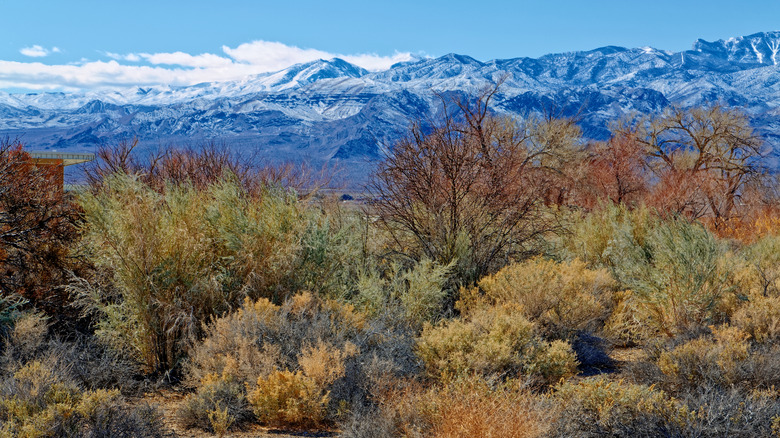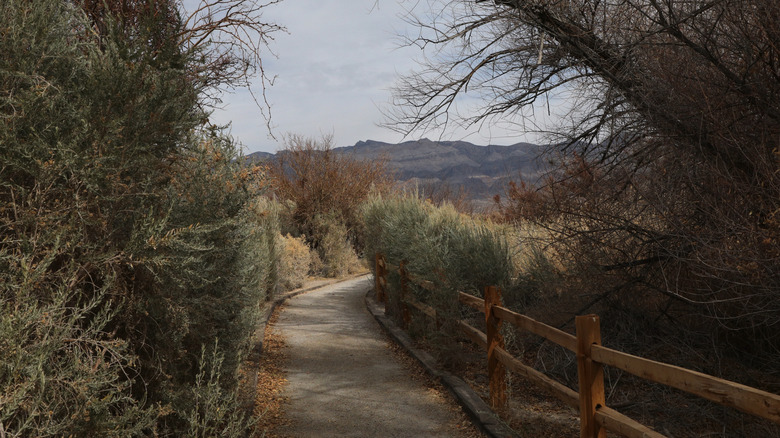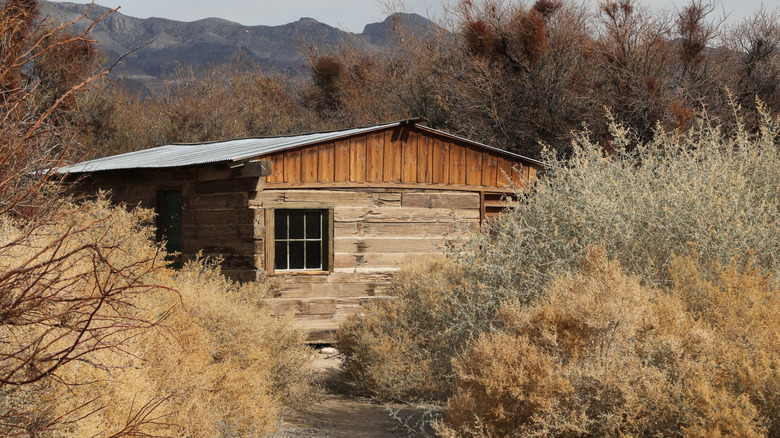
Las Vegas is renowned as America's top summer destination with world-class food, views, and shows, but Nevada also boasts incredible natural places, too. The heat is just one reason to make an escape, as average temperatures are slightly cooler in the desert surrounding Las Vegas, as the city itself creates what's known as an "urban heat island." And that's not to mention that some of the best national parks are within close driving distance of Vegas. Less crowded destinations like Cathedral Gorge
State Park, where eerie moon caves meet mesmerizing landscapes, or Gold Butte National Monument, a striking desert landscape full of red rocks and ancient petroglyphs, offer dramatic and photo-worthy escapes when you're craving a break from the bright lights. For yet another quick escape that feels worlds away from the throngs of Sin City, head to the stunning Desert National Wildlife Refuge.
This expansive, 1.6-million-acre preserve is home to six mountain ranges and seven unique Mojave Desert "life zones" across different elevations. It's the biggest wildlife refuge in the lower 48 states, and it's dedicated to protecting bighorn sheep and a wide array of other plants and animals. Corn Creek Visitor Center, which sits near the southern boundary of the refuge and has maps and public restrooms is only a half-hour drive from downtown Las Vegas via US-95. So whether you're into hiking, paleontology, stunning landscapes, unique wildlife, or all of the above, you'll love a stop at this desert oasis.
Read more: The 5 Best Hidden Hot Spring Hikes In California
Explore The Timeless Mojave Desert On Picturesque Trails

The Corn Creek area of Desert National Wildlife Refuge consists of four interlinked loop trails and one short .07 mile in-and-out spur called the Whispering Ben Trail that takes only about 5 minutes one-way. This short yet rewarding stretch is reached by starting on the Jackrabbit Loop from the Corn Creek Visitor Center, then continuing along the Bighorn Loop until you reach the turnoff that leads you along a wash — remember to be aware of the weather, as flash floods can happen unexpectedly in the summer. At the end of the trail, you'll find a limestone mortar that was historically used by local Nuwuvi (Southern Paiute) people, who for centuries ground grains, maize, and mesquite pods on stone slabs like this.
All of the trails surrounding Corn Creek Visitor Center are rated easy, and all are less than half a mile long, easily combined for a longer stroll. For a bit more of a challenge, head about 15 miles west to Gass Peak Trail, a backcountry route best for experienced hikers due to the rugged, unmaintained terrain. It may lead you via washes, so hiking in the summer is not advised, but if you plan carefully and pack a map, compass, and plenty of water, you'll enjoy this rugged 3.9-mile out-and-back, route. If backpacking is your thing, head to the Hidden Forest Trail, about 19 miles north, which takes you 9.4 miles through ponderosa pines and groves of quaking aspens.
Hike Through Thousands Of Years Of History

The Corn Creek Visitor Center is just north of the boundary of Tule Springs Fossil Beds National Monument, where Ice Age fossils were preserved in the area's prehistoric wetlands 12,500 to 100,000 years ago. Along with a stop at nearby Ice Age Fossils State Park just 15 minutes away, your visit to Corn Creek will send you on a journey through time to Las Vegas' Ice Age past.
Back to the present day along the Corn Creek area trails, check out the refugium along the Coyote Trail, which holds an endangered species of fish native to Nevada known as the Pahrump poolfish. Their numbers dwindled by an alarming 90% since 2015, and Desert NWR is working hard to conserve their fragile population. Then carry on toward a truly wonderful example of early 20th-century upcycling, the Railroad Tie Cabin. This unique home was built in the 1920s using offcast wooden beams, many of which are still original following preservation efforts and feature impressions of spikes where track was once held down.
Speaking of living spaces, if dispersed camping in the rugged mountains of the Mojave isn't quite what you had in mind but you're looking for somewhere to stay, Las Vegas of course offers a wealth of options. Check out the all-suite hotel with world-class restaurants, a luxury spa, and easy access to the Sphere, or for something a little more intimate, book a well-appointed room at a selection of wonderful boutique hotels like Nobu Hotel, The Cromwell, or a recently renovated retro gem, Downtowner.
Ready to discover more hidden gems and expert travel tips? Subscribe to our free newsletter for access to the world's best-kept travel secrets.
Read the original article on Islands.













